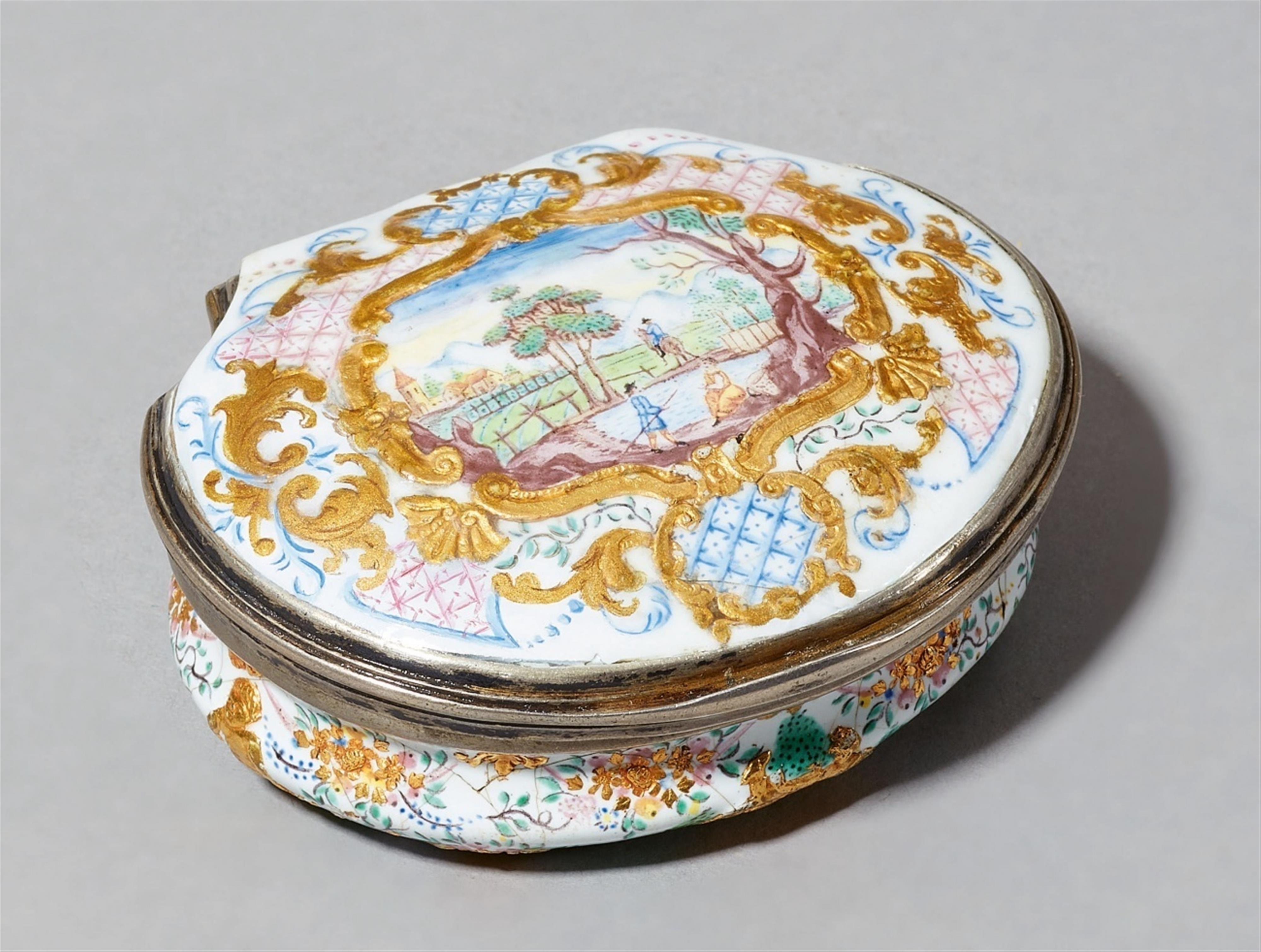An émail de Saxe snuff box
Polychrome enamel on copper and gilt tin corpus, possibly mounted in silver. Shell-shaped snuff box, the slightly domed lid decorated with a raised gilt cartouche surrounding figures in a landscape. Similar decor to all faces and the underside. Interior gilt. The lid restored. H 3, W 7, D 5.6 cm.
Berlin, sale/production (?) Alexander Fromery, circa 1740, this decor design attributed to Christian Friedrich Herold.
Tobacco to Go
Sniffing tobacco is out of fashion nowadays. It is smoked, but no longer sniffed or chewed. The tobacco plants from which these products were obtained were first brought to Europe in 1500 by Christopher Colombus. The European aristocracy promptly took on the task of testing their consumption. Catharina de Medici, who became Queen of France in 1547, successfully utilised the new product to treat her migraines and thus it received the moniker "poudre de la reine". By the times of Shakespeare, tobacco had become affordable for the masses. Its consumption increased considerably in the early 18th century when English sailors were able to capture American ships transporting bales of snuff tobacco, which they enriched with perfume.
Following the union with Scotland in 1707, Glasgow became the primary trade hub for tobacco, supplying ports throughout the whole of Europe. The tobacco was sold loose in small pouches, but buyers required boxes in which it could be stored for everyday use. The majority of these were made from light tin, which at best was decorated with simple punched decor. The aristocracy were able to afford precious boxes made of gold, semi-precious stones, or porcelain. Whilst the French upper classes tended to prefer gold or silver boxes, the Germans preferred to take their tobacco from boxes made of porcelain or brass. The most famous products made in Berlin were the enamel boxes of the Fromery workshop, which were sold throughout the entire continent. The painter Christian Friedrich Herold of Meissen fame also worked for Fromery's workshop (this was not at all well received in the Meissen manufactory, as he repeatedly stole purple pigment from Meissen to paint snuff boxes, a crime for which he was punished with a prison sentence).
Pierre Fromery (1679 - 1738) was originally a goldsmith but later specialised in the production of works in enamelled copper with gold appliques, founding a large workshop producing a wide variety of fancy goods such as hairbrushes, snuff boxes, and bottles. His son Alexander took over the running of the firm following his father's death in 1738. Prussia's victory in the Seven Years' War in 1763 increased the Fromery workshop's sales of snuff boxes with military motifs considerably. They may have been presented to soldiers in honour of special service. Around the year 1800, tobacco preferences among the upper classes began to move towards cigars and pipes when they noticed that even ordinary people were using snuff. Tobacco was first made into rolled cigarettes towards the end of the 19th century.
Provenance
South German aristocratic ownership.
Literature
Cf. Weinhold, Emailmalerei, Munich-Berlin 2000, p. 157 ff.

